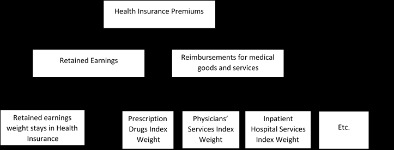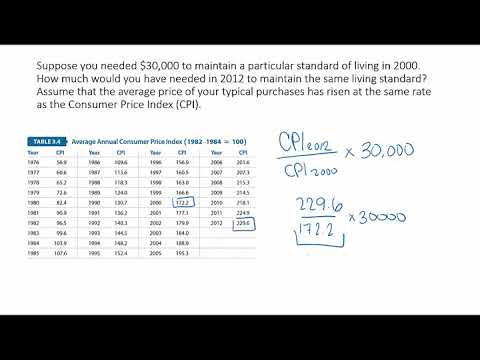Bls Cpi Index
Table of Contents Heading
- Different Indices Computed By The Bls
- Receiving And Using Stimulus Payments During The Pandemic
- How Does The Bureau Of Labor Statistics Determine The Consumer Price Index (cpi)?
- Keeping The Cpi
- Unemployment System Data
- Consumer Price Index Sample Clauses
- Consumer Price Index For All Urban Consumers: Rent Of Primary Residence In U S. City Average (cuur0000seha)
- Collecting Cpi
Jennifer Edgar, our Associate Commissioner for Survey Methods Research, died November 8 in a tragic fall in her home. She leaves behind her husband and two young children, her parents, and her sister. Jennifer was using her considerable energies to move BLS forward. Her passing is a huge blow to her family, loved ones, and the entire statistical community. We are working on ways to ensure Jennifer’s memory and passion is forever present at BLS. Several other surveys have adopted a similar training approach as the Consumer Price Index. Our data-collection staffs also increasingly use videoconferencing for mentoring and to share ideas about how to make the data-collection experience better for data collectors and respondents.
Several of our surveys have started using videoconferencing tools to speak with respondents and collect data from them. Some of the surveys that now use this technology include the National Compensation Survey, the Occupational Requirements Survey, and the Producer Price Index. Many of our surveys previously relied on interviewers visiting businesses or households to collect data. We suspended all in-person data collection in March to protect the health of data collectors and respondents, so we had to find other ways to collect data. Many of our surveys also use telephone and internet to collect data, but those modes aren’t always ideal for every kind of data.
Different Indices Computed By The Bls
The current BLS methodology of calculating CPI takes into account changes in consumer purchasing preferences. In the simplified example presented, if there is no change in consumer behavior, then the calculated CPI would be 10%.
Non-farm consumers living in rural areas within MSAs are included, but the index excludes rural consumers and the military and institutional population. The consumer price index for all urban consumers (CPI-U) was introduced in 1978. In 2020 it represented the buying habits of approximately 93 percent of the non-institutional population of the United States, compared with 29 percent represented in the CPI-W. The methodology for producing the index is the same for both populations. Each quarter, BLS also uses a similar concurrent process to calculate seasonal factors for productivity measures and business employment dynamics. This helps create the best seasonal factors when seasonality may shift over time.
Receiving And Using Stimulus Payments During The Pandemic
When new factors for 2021 and revised historical factors are calculated, BLS will examine the effects of the pandemic on the seasonal adjustment models. Regardless of whether the factors are projected or concurrent, the seasonal adjustment models can be additive or multiplicative. The COVID-19 pandemic affected the seasonal adjustment process in different ways depending on how the seasonal factors are calculated. BLS seasonally adjusts data in several of its monthly and quarterly news releases. In April 2020, BLS reported a loss of more than 20 million jobs in one month, based on data from the Current Employment Statistics program. The job losses were widespread, including a loss of 570,000 jobs in the transportation and warehousing industry from February to April.
Before seasonal adjustment, the all items index increased 1.2% since this time last year. Commodity and services prices are reportedeach monthfor thethree largest CBSA mertro geographic areas (Chicago-Naperville-Elgin, IL-IN-WI, New York-Newark-Jersey City, NY-NJ-PA, and Los Angeles-Long Beach-Anaheim, CA).
How Does The Bureau Of Labor Statistics Determine The Consumer Price Index (cpi)?
Headline inflation is the raw inflation figure reported through the Consumer Price Index that is released monthly by the Bureau of Labor Statistics. The inflation-adjusted return is a measure that accounts for the return period’s inflation rate. The CPI deflates some components used to calculate the real GDP—a lower inflation rate is reflective of a healthier economy.
- The electricity and natural gas indexes also increased, and the energy index rose 3.9 percent over the month.
- Yet, under the auspices of the US Congress, the CPI eventually developed into a cost of living index .
- The Inventory Price Index Computation method allows taxpayers to use published external indexes to calculate inflation for the purpose of valuing LIFO inventories.
- When possible, data normally collected by personal visit were collected either online or by phone.
As the inflation rate increases, higher nominal returns must be earned to obtain a desiredreal rate of return. The nominal annual required total return is approximated as the real required return plus the rate of inflation. For short investment horizons, the approximate method works well. The Bureau of Labor Statistics produces theConsumer Price Index .
Keeping The Cpi
By looking at the change in the Consumer Price Index we can see that an item that cost an average of 9.9 cents in 1913 would cost us about $1.82 in 2003, $2.02 in 2007, $2.33 in 2013 and $2.39 in 2016. If the current 12-month percent change is smaller than the previous published 12-month percent change, the most recent month with a change as mall or maller than the current month change is identified. If the current and previous published 12-month percent changes are equal, a dash will appear. For example, 2.0% is greater than 0.6%, -4.4% is less than -2.0%, and -2.0% is less than 0.0%. components of the U.S. city average all items index are not seasonally adjusted for 2021. The index for all items less food and energy rose 1.3 percent over the past 12 months.

To provide appropriate weighting patterns for the index, it reflected the relative importance of goods and services purchased in 92 different industrial centers in 1917–1919. Periodic collection of prices was started, and in 1919 the Bureau of Labor Statistics began publication of separate indexes for 32 cities. Regular publication of a national index, the U.S. city average began in 1921, and indexes were estimated back to 1913 using records of food prices.
Unemployment System Data
In the case of the season ticket package where the number of games changes but all else is the same, we may be able to use simple math to make the old and new prices comparable. When we collect — In June 2005, the CPI switched from a collection period that spanned the first 15–18 days of the month to collection across the entire month. This provides more representative data, especially for items that frequently vary in price within the same month. We collect prices for goods and services in selected geographic areas, designed to represent all urban areas of the United States. In January 2018, we updated the geographic areas, designed to represent current population trends.
Since its beginnings in 1884, BLS has built consistent data to allow comparisons across the decades. Maintaining this history allows data users to quickly learn “when was the last time.” We also have collected and published new data specifically about the COVID-19 pandemic. Still to come, BLS will release more 2020 data in the coming year. Those new results will add to the unique story of the extraordinary 2020 economy. The 3.5-percent unemployment rate in both January and February 2020 tied for the lowest rate since December 1969 (also 3.5 percent). The unemployment rates for several demographic groups were at or near their record lows. For example, the unemployment rate for African Americans in February 2020, at 6.0 percent, was close to the all-time low of 5.2 percent in August 2019.
Consumer Price Index Sample Clauses
A hallmark of our international activities has been onsite seminars at BLS, often attended by a multinational group of statistical experts and those working to become experts. At these seminars, BLS technical staff present details on every aspect of statistical programs, including concept development, sampling, data collection, estimation procedures, publishing, and more. In recent years, funding, travel restrictions, and other limitations have reduced the number of in-person events, replaced to some extent by virtual events. And of course, the current COVID-19 pandemic and related travel restrictions mean all such events are now being held virtually. Since BLS has long been known for producing gold-standard data, information about our procedures and methods is also of great interest to our international colleagues. In fact, BLS has helped statistical organizations throughout the world with the collection, processing, analysis, publishing, and use of economic and labor statistics for more than 70 years. We provide this assistance primarily by our Division of International Technical Cooperation.

We gain this trust by documenting the design and procedures for all our programs in our Handbook of Methods. Our website also explains our policies for ensuring data quality and protecting the confidentiality and privacy of the people and businesses who participate in our surveys and programs. Further, BLS works with the wider U.S. statistical community to ensure and enhance the quality of statistical information.
A Truckload Of Transportation Statistics
The larger dataset provides more precise measures of price change. The BLS quarterly measure of labor productivity in the nonfarm business sector compares output to hours worked. The pandemic saw large declines in both output and hours starting in mid-March. There was a small decline in labor productivity in the first quarter of 2020, down 0.3 percent, as output declined (-6.4 percent) slightly more than hours worked (-6.1 percent). While we had not experienced declining productivity in nearly 3 years, small increases or decreases in the quarterly change are common. The second quarter saw labor productivity soar by 10.6 percent, the largest increase since 1971, when productivity increased 12.3 percent in the first quarter. The second quarter 2020 increase reflected a greater decline in hours worked (-42.9 percent) than in output (-36.8 percent).
We also provide program-specific information with each data release to alert users to any unique circumstances in the data. We see a similar pattern when looking at state unemployment rates, with record-setting lows early in 2020 followed by record-setting highs. In February, state unemployment rates ranged from a low of 2.2 percent in North Dakota to a high of 5.8 percent in Alaska, with 12 states at their historic lows that month. By April, rates had increased in all states, with 40 states and the District of Columbia setting new highs in that month, and another 7 states cresting in subsequent months.
Our staff will continue to publish research on how the pandemic has affected the labor market and markets for goods and services. BLS is one of several federal agencies that developed questions for the rapid response Household Pulse Survey. Department of Housing and Urban Development, the National Center for Education Statistics, the National Center for Health Statistics, and the U.S.
Consumer Price Index For All Urban Consumers: Rent Of Primary Residence In U S. City Average (cuur0000seha)
Various public and private organizations use CPI data for Cost of Living Adjustments for programs like Social Security and for provisions of the tax code. Sarah has been writing on the topics of politics, history and finance for over a decade.
The difference in the car indexes is larger, with the official index showing a 5.2-percent increase, while the research index shows only a 1.5-percent increase. The research index includes all types of new vehicles—cars, SUVs, and trucks. And since the data reflect actual transactions, the shift in consumer preference from cars to other types of vehicles is reflected in the data.

These questions were added in May 2020 and will remain in the survey until further notice. One question asks whether people teleworked or worked from home because of the pandemic.
This survey provides data on the average expenditure on selected items, such as white bread, gasoline and so on, that were purchased by the index population during the survey period. In a fixed-weight index such as CPI-U, the implicit quantity of any item used in calculating the index remains the same from month to month.

